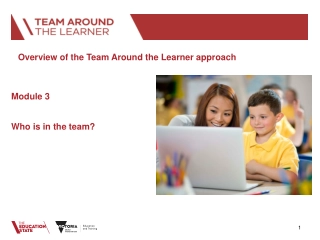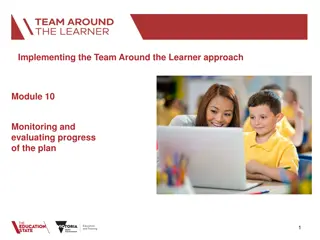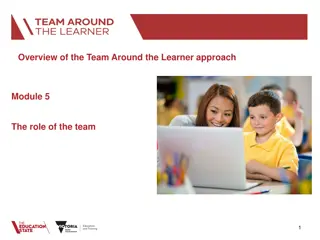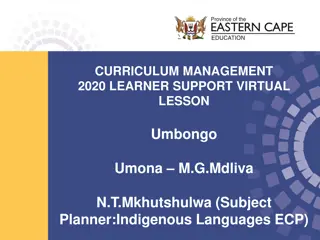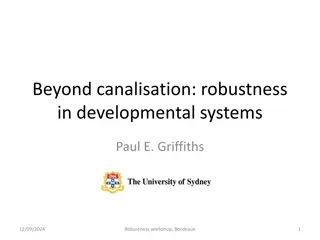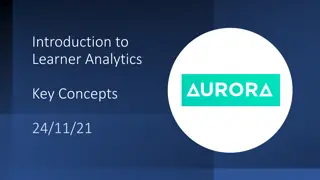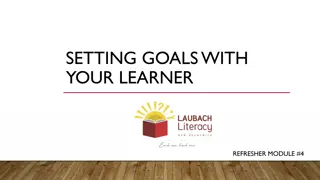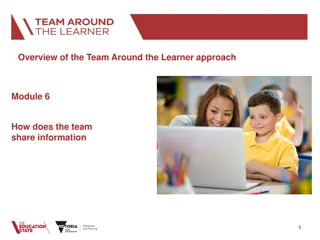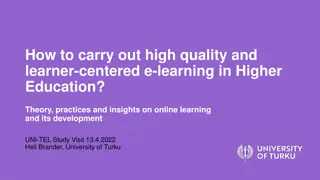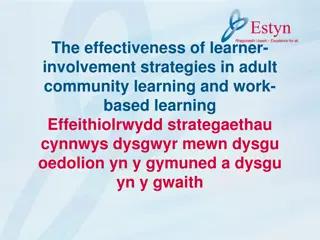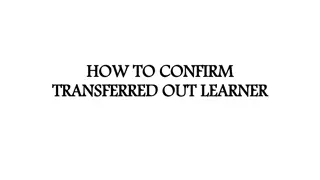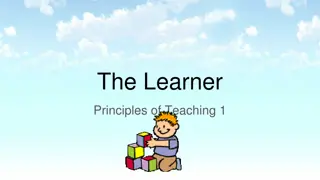
Effective Strategies for English Teacher Response to Learner Talk
Explore practical ways for English teachers to respond to learner talk in the classroom, enhancing teacher-learner interaction. Learn how to focus on content over form to encourage meaningful communication and interaction effectively.
Download Presentation

Please find below an Image/Link to download the presentation.
The content on the website is provided AS IS for your information and personal use only. It may not be sold, licensed, or shared on other websites without obtaining consent from the author. If you encounter any issues during the download, it is possible that the publisher has removed the file from their server.
You are allowed to download the files provided on this website for personal or commercial use, subject to the condition that they are used lawfully. All files are the property of their respective owners.
The content on the website is provided AS IS for your information and personal use only. It may not be sold, licensed, or shared on other websites without obtaining consent from the author.
E N D
Presentation Transcript
Responding to learner talk Barney Griffiths Language coach, teacher, trainer and materials developer Contact: barneygriffiths@gmail.com
Overview This workshop explores how English teachers might best respond to learner talk in the classroom in order to maximise teacher and learner interaction
Everyday classroom examples Task 1: List some ways in which an English teacher might respond to the following situation in a pre- intermediate class: T: Mireia, what did Albert tell you about his family? S: He say me he have three sons, two boys and one girl T: (your responses) a. b. c. d. e. f. g. h. i. No teacher talk, but a gesture to self-correct He told me he has three children, two boys and a girl Sounds like Albert s got his hands full Past tense. Different verb. Vocabulary problem. And what else did he say? Can you rephrase that in correct English? And what did Mireia tell you, Albert? Albert has three children? Who else in the class has children? To whole class: Can anyone correct that? Task 2: 1. What does each response tell you (and the students) about the teacher s focus? 2. Which response(s) do you think are more effective in encouraging further interaction? Why?
Everyday classroom examples Task 2: 1. What does each response tell you about the teacher s focus? a. b. c. d. e. f. g. h. i. No teacher talk, but a gesture to self-correct FORM-FOCUSED He told me he has three children, two boys and a girl FORM-FOCUSED Sounds like Albert s got his hands full CONTENT-FOCUSED Past tense. Different verb. Vocabulary problem. FORM-FOCUSED And what else did he say? CONTENT-FOCUSED Can you rephrase that in correct English? FORM-FOCUSED And what did Mireia tell you, Albert? CONTENT-FOCUSED Albert has three children? Who else in the class has children? CONTENT-FOCUSED To whole class: Can anyone correct that? FORM-FOCUSED 2. Which response(s) do you think are more effective in encouraging further interaction? Why? The CONTENT-FOCUSED ones. Because they encourage learners to respond to what was said not how it was said.
A suggested formula for maximising interaction: respond to content first Are you aware of whether you are responding to form or content? Are your students? How about we devise a rationale for this? Always respond to content first, then form. Outcome: Your learners know you will deal with their language problems when the time is right, but first and foremost you want them to communicate and interact. As a teacher this helps you to be more organised, more aware of the aims of your teacher talk and more able to give meaningful language feedback when the time is right.
Everyday classroom examples Task 3: List some ways in which a language teacher might respond to the content of the learner s talk in an upper-intermediate class: T: What do you think about what the author says? S: I think the immigration provoke more problems for the people of this country T: (your responses) a. But don t you think that immigration has brought lots of positive things to the country as well? b. You don t really think that, do you? c. That s a very right-wing thing to say d. Silence and look around at the rest of the class for a response. e. OK, get into pairs and discuss whether you think David s right Task 4: 1. 2. Are there any of these you don t like? Why? Which response(s) do you think are more effective in encouraging student-to- student interaction? Why?
Everyday classroom examples Task 4: List some ways in which a language teacher might respond to the content of the learner s talk in an upper-intermediate class: T: What do you think about what the author says? S: I think the immigration cause more problems for the people of this country a. But don t you think that immigration has brought lots of positive things to the country as well? ONE-TO-ONE FOCUS TEACHER TOO INVOLVED, TENDS TO EXCLUDE OTHER LEARNERS b. You don t really think that, do you? CONFLICTIVE - DOES NOT TEND TO LEAD TO PRODUCTIVE INTERACTION c. That s a very right-wing thing to say LABELLING LEARNERS RESPONSES CAN CAUSE OFFENCE AND LEAD TO RESISTANCE d. Silence and look around at the rest of the class for a response ENCOURAGING GENUINE WHOLE CLASS INTERACTION MAY BE USEFUL e. OK, get into pairs and discuss whether you think David s right ENCOURAGING GENUINE INTERACTION IN PAIRS
But what about form? Let s not forget form, we are language teachers after all Consider the usefulness of a LANGUAGE FEEDBACK SLOT and then REPEATING THE ACTIVITY but in BETTER ENGLISH. Learners become accustomed to you encouraging maximum interaction in the knowledge that you will deal with their language issues when appropriate. Task 5: In the examples we ve seen, what might we want to do a language feedback slot on? S: He say me he have three sons, two boys and one girl S: I think the immigration provoke more problems for the people of this country
But what about form? In the examples we ve seen, what might we want to do a language feedback slot on? Learner talk Vocabulary Grammar reminder) Pronunciation S: He say me he have three sons, two boys and one girl - tell s.o. sth. vs say sth. - The family: sons vs children, etc. - Past tense: say > said; tell > told - Third person s - Vowel sounds: child/children; girl S: I think the immigration provoke more problems for the people of this country - Articles: use of definite article - Quantifiers: more vs a lot - Third person s (a - provoke vs cause - Vowel sounds: / /country - Sentence stress
FINAL THOUGHTS To my mind, effective language teachers: Resist the temptation to pronounce their views on everything students say, understanding that their job is to facilitate interaction and then help students express what they want to say better May respond briefly to the content of learners contributions, but only to instigate further interaction, while they themselves take notes for language feedback Do not respond to learner talk with the aim of teaching students about life, but rather to maximise the effectiveness of the task
Thank you for coming Contact: barneygriffiths@gmail.com

